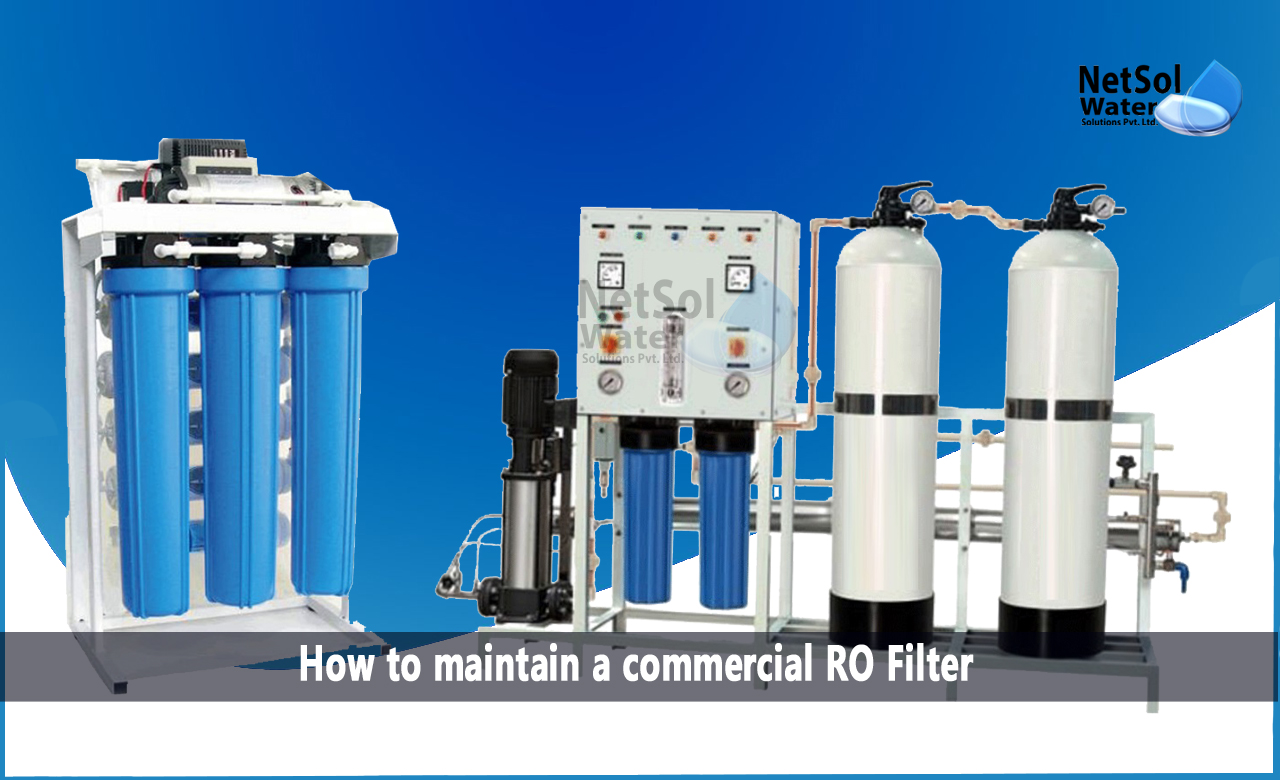Our daily lives depend considerably on the water purification system. Daily upkeep is necessary to ensure the smooth operation of the entire water purification system for any enterprise that demands pure water. The longevity of the cleaning system, as well as the operational effectiveness of the system and the water quality, depend on knowing how to perform daily maintenance in a proper manner after installation and commissioning are complete. Pre-treatment machinery, reverse osmosis systems, and downtime maintenance are the three basic components of daily maintenance.
How to maintain a commercial RO Filter?
To keep a commercial reverse osmosis system from clogging, it is necessary to replace certain filters. The person in charge of maintaining an industrial reverse osmosis system must monitor each filter during the stages listed below:
First Stage: Pre-Filter
To safeguard the vulnerable reverse osmosis membranes, water is sent through a pre-filter during phase 1 of the process. Sand, mud, silt, and other sediments are filtered by pre-filters. To avoid clogging, people should replace the pre-filter every six to nine months. The pre-filter may collapse if this filter becomes blocked, or particles may penetrate the membranes. A schedule for pre-filter replacements should be established by the person in charge of maintaining a RO system.
Second stage: carbon filter
Phase 2 of reverse osmosis involves the passage of water through a carbon filter. Chlorine and some total organic carbon (TOC) are removed by the carbon filter. The person in charge of a RO system should keep the carbon filter clean. Chlorine levels should be checked every day. According to your water treatment recommendations, the carbon filter maintenance schedule should be followed. The RO membranes may suffer permanent harm from chlorine.
Third Stage: RO Membrane
Reverse osmosis is the third phase. Strong pressure forces water through the RO membrane during this stage. Pressure forces the water back through the membrane to the first side after it has passed through, holding pollutants on one side. About two drips of water per second, or 35 pounds per square inch, pass through the membrane.
After the membrane traps contaminants, they move down the drain. The lifespan of the filter and membrane will vary depending on how the facility is used and the quality of the water, but the person in charge of system maintenance should clean the RO membranes as necessary and aim to replace them every two to three years.
How frequently should a reverse osmosis system be maintained?
A reverse osmosis system utilizes a number of filters. And every one of them is made to improve your home's water quality by removing various contaminants.
The majority of the filters in your system should be changed at least every three to twelve months. The number of filters you have depends on the system. Additionally, your RO system needs to be sanitized at least once a year.
As a result, we advise you to do reverse osmosis system maintenance at least once a year.
Do you need an advice or assistance on selecting the best water and waste water treatment unit? We have solutions for all your problems!
Let us now your problem, our experts will make sure that it goes away.
For an assistance or related query,
Call on +91-965-060-8473
Or write us at enquiry@netsolwater.com



